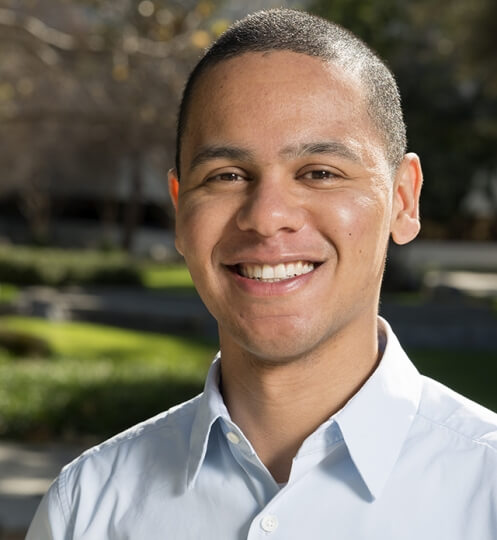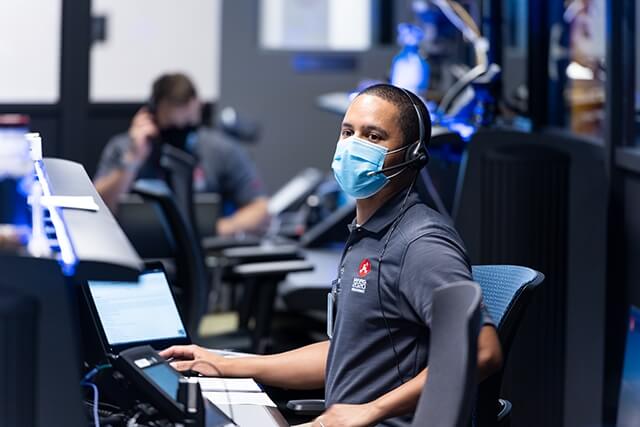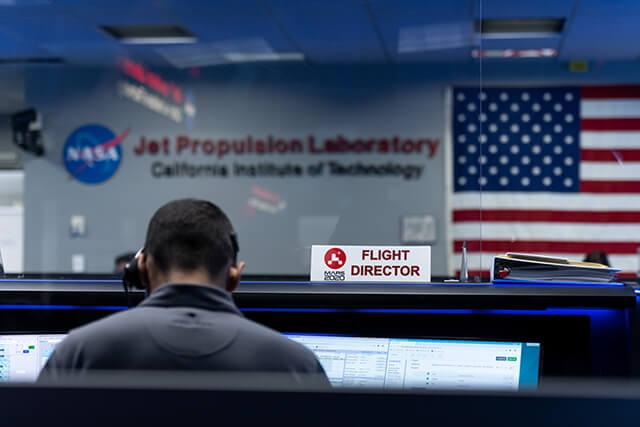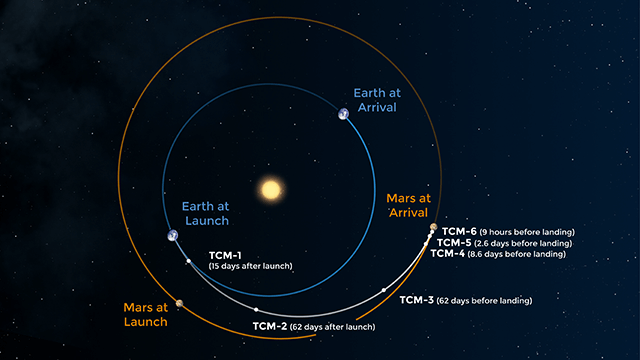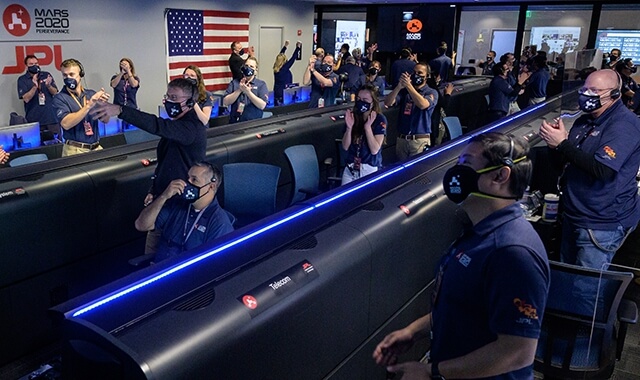It may have been the longest seven minutes of Matthew Smith’s life.
At around 3:48 p.m. EST on Feb. 18, 2021, the NASA Perseverance Mars Rover began its entry into the atmosphere of the red planet—the riskiest portion of its almost-seven-month interplanetary journey—only to touch down flawlessly seven minutes later. Smith, a flight director for the mission, and his NASA colleagues breathed a huge sigh of relief.
“The rover is designed to go through the landing all by itself, with no intervention from Earth, so it is all about making sure we set up that autonomous landing behavior successfully,” he said. “We went into landing day knowing it was healthy. We just had to let the spacecraft do its thing and let Mars do its thing, and either it was going to work or not. But we had to have confidence that we had done everything we could do to make it successful, knowing that Mars is very challenging and it could go either way.”
For Smith, A.B. ’07, an applied math concentrator at the Harvard John A. Paulson School of Engineering and Applied Sciences, the successful touchdown also marked the culmination of his journey to Mars.
He joined the Perseverance systems engineering team when the spacecraft was still being designed. The team worked to specify the actions Perseverance would need to undertake during its cruise to Mars, ensure those actions were coded properly into the software, and then conduct hardware and software tests during weeks-long exercises designed to mimic spaceflight.
Matt Smith, flight director for the second Mars 2020 mission trajectory correction maneuver (TCM-2), studying the screens at NASA’s Jet Propulsion Laboratory in Southern California. TCMs are a series of planned adjustments to put the rover on the correct path to land on Mars. Credit: NASA/JPL-Caltech
“Even though a lot of Perseverance was based on Curiosity, we couldn’t just assume those systems were correct. We had to test every single aspect of the rover. The amount of time to go through everything with a fine-tooth comb was just incredible,” he said. “And then you have a fixed launch window. There is this periodic alignment between Earth and Mars every 26 months. So if we missed our window, we would be delayed for over two years, which is a huge cost. Orbital mechanics waits for no one.”
For a while, the team was running three shifts a day, six days a week, just to get the work done on time. Their efforts paid off, and Perseverance launched as scheduled on July 30, 2020.
Once the spacecraft was speeding away from Earth at 24,600 miles per hour, Smith changed gears and took on the role of one of the mission’s six flight directors.
“It is kind of like being Ed Harris in ‘Apollo 13,’ but with less drama,” he said. “We are responsible for directing the team to perform different activities as we go to Mars.”
Flight Director Matt Smith studies the data during the second post-launch trajectory correction maneuver during Perseverance’s cruise to Mars. The team is in the Mission Support Area at NASA’s Jet Propulsion Laboratory in Southern California. Credit: NASA/JPL-Caltech
Smith focused on trajectory correction maneuvers (TCMs) where small rocket engines on the spacecraft are used to adjust its trajectory so it remains on target for the proper Mars entry position and time.
Choreographed well in advance (each day of the cruise period was planned long before launch), the team began working on a specific TCM about a week before the scheduled maneuver. The navigation team reported on the spacecraft’s current location and destination, then Smith and his colleagues built a sequence of actions that executed that move. The sequence was thoroughly tested and reviewed on the ground before being relayed to the spacecraft.
Through a combination of good preparation and good luck, the team only needed to use three of the six planned TCMs to keep it on course.
“Everything in space is complicated. The spacecraft is out there, millions of miles away from us, and if we make a mistake where we accidentally tell the spacecraft to point in the wrong direction or turn its radio off, it can be very difficult to get back in touch,” he said. “On landing day, it took about 22 minutes to send a command and get a response. So you have to be very sure of what you are doing, because there is no quick chance to recover if you make a mistake.”
For Smith, who had been immersed in the project for years, the Perseverance’s smooth cruise through the cosmos and impeccable landing were immensely gratifying.
Illustration of the route Mars 2020 takes to the Red Planet, including several trajectory correction maneuvers (TCMs) to adjust its flight path. Credit: NASA/JPL-Caltech
Now that the rover is on Mars and the surface operations team has taken over, Smith’s role on the project is complete. He’s preparing to join the team for the Nancy Grace Roman Space Telescope, which is set to launch in the mid-2020s.
The Roman Space Telescope, which will carry an instrument called a coronagraph, will search for exoplanets around other stars.
“It is a very challenging, technical thing to do because the light from the star is about a billion times brighter than the light from the exoplanet next to it. So it is like looking for a firefly next to a lighthouse,” Smith said. “The coronagraph has special technology that blocks the light from the star, so the light from the planet can shine through.”
Smith is excited for the new challenges of this project, which is especially fitting for him; after he joined NASA, he spent four years working on optical instruments and building a test bed that was the precursor for this coronagraph.
Joining NASA was the fulfillment of a lifelong passion for aerospace. Smith grew up in Pasadena, Calif., down the road from the NASA Jet Propulsion Laboratory, and was constantly impressed and inspired during school visits to the facility and summer internships while he was a Harvard undergraduate.
Members of NASA’s Perseverance Mars rover team watch in mission control as the first images arrive moments after the spacecraft successfully touched down on Mars, Thursday, Feb. 18, 2021, at NASA's Jet Propulsion Laboratory in Pasadena, California. A key objective for Perseverance’s mission on Mars is astrobiology, including the search for signs of ancient microbial life. The rover will characterize the planet’s geology and past climate, pave the way for human exploration of the Red Planet, and be the first mission to collect and cache Martian rock and regolith. Credit: (NASA/Bill Ingalls)
“I actually rode my bike from home to the lab each day because I lived that close,” he said.
After earning his undergraduate degree in applied math, Smith went on to complete a master’s degree in engineering from the University of Cambridge, and then a master’s degree and Ph.D. in aeronautics and astronautics from MIT.
Since landing at NASA, he’s enjoyed applying his engineering skills and intellectual curiosity to multi-faceted problems that help answer some of humanity’s deepest questions.
“Being able to build hardware with your hands that goes to space, or stand next to a rover in the clean room that is now 130 million miles away on the surface of Mars is really amazing,” he said. Still, it is the human connection that keeps Smith going. “Despite the ‘cool factor’ of what we do and the amazing science involved, working with such great people has been the most rewarding part of my time at NASA.”
Press Contact
Adam Zewe | 617-496-5878 | azewe@seas.harvard.edu
